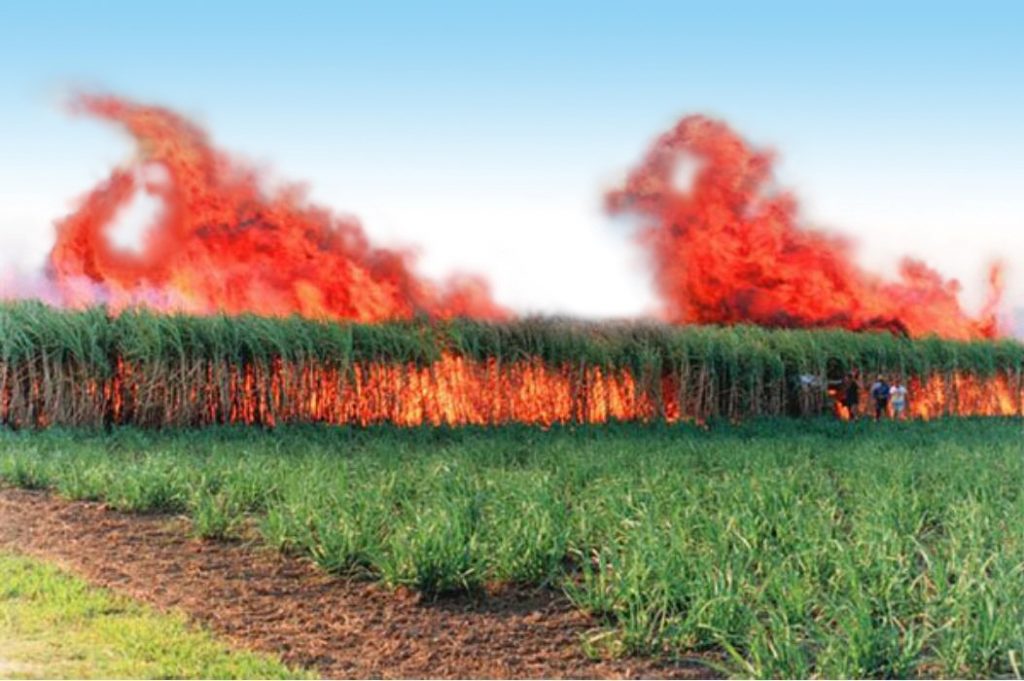
The use of pre-harvest burns is necessary for Florida sugarcane farmers and does not endanger the surrounding communities. That is the message members of the U.S. Sugar company are conveying to alleviate any concerns people or special interest groups may have.
Pre-harvest burns promote healthy plant regrowth for future crops and improves the quality and efficiency of the harvest. Sugarcane stalks have high moisture content but contain dry leaves on the outside, like corn stalks. The burn removes those leaves from the sugarcane stalk, making it safe for the workers as they can see where they are going in the field.
Sugarcane is harvested, taken to a railhead, and then transported to the mill by train. Without the burn, much of the leaves and dry material would stay on the sugarcane, which means that the transports carry more leaf-trash. This results in transport inefficiency.
Also, much of the leaf and dry material is left in the field, creating a “leaf-trash blanket.” In a dry year, this could spark a wildfire. It could also increase rodent and insect pressure, which could damage the subsequent regrowth of the next sugarcane crop.
Ryan Duffy, director of corporate communications for U.S. Sugar, says specialty interest groups who argue against pre-harvest burns do not present all the facts when making their argument.
“They have selectively chosen a piece of the research and said you can get the same yield if you don’t burn the cane versus cane that’s burnt. What that misses is that if you leave all of that leaf trash on the field, it will impact the next year’s crop, and there may not be the same yield next year,” Duffy said.
Burn Permits
Duffy and Judy Sanchez, senior director for corporate communications and public affairs at U.S. Sugar, reassure Florida residents that all controlled pre-harvest burns are regulated by the Florida Forest Service. Every controlled pre-harvest burn requires an individual burn permit for each field, which will only be issued for that day. The Florida Forest Service grants or denies the permit based upon that day’s weather conditions.
Certain criteria must be met for a sugarcane grower to be approved for a burn permit. These include wind direction and speed, atmospheric conditions and location relative to sensitive areas like hospitals, schools and highways.
“For (special interest groups) to say that some communities are protected and some are not, that permit protects everyone every day. Based on wind speed and wind direction and location, that permit will not be given if any of those sensitive areas would be impacted by issuing that permit on that day,” Sanchez said.
She added that farmers do not apply for permits near schools during the school week.
University of Florida Study
According to a research study by the University of Florida in 2013, harvesting without burning can have negative consequences to subsequent sugarcane crops. It found that due to excess vegetation left on the fields with sugarcane that was not burned, young shoots that emerged from green cane harvest fields may suffer frost damage and delayed growth when temperatures are near or below freezing.
Leftover plant matter can also reduce available soil nitrogen to the crop.
“When we burn it in the field, our nutrients, like potassium and phosphorus are going to remain in the ash and stay in the field. That’s what we want to put it back in for anyway for the nutritional value of it,” University of Florida Extension agent Stewart Swanson. “We (also) cultivate our fields to keep the weeds out in the row middles. You get that trash layer in there and the equipment just balls it up and bundles it up, so it makes it really hard to cultivate, which is an important weed control practice.”









